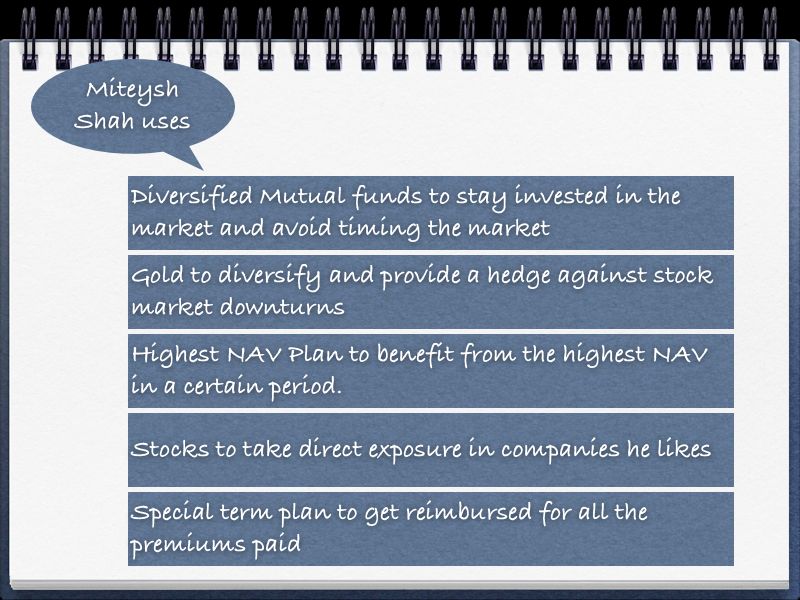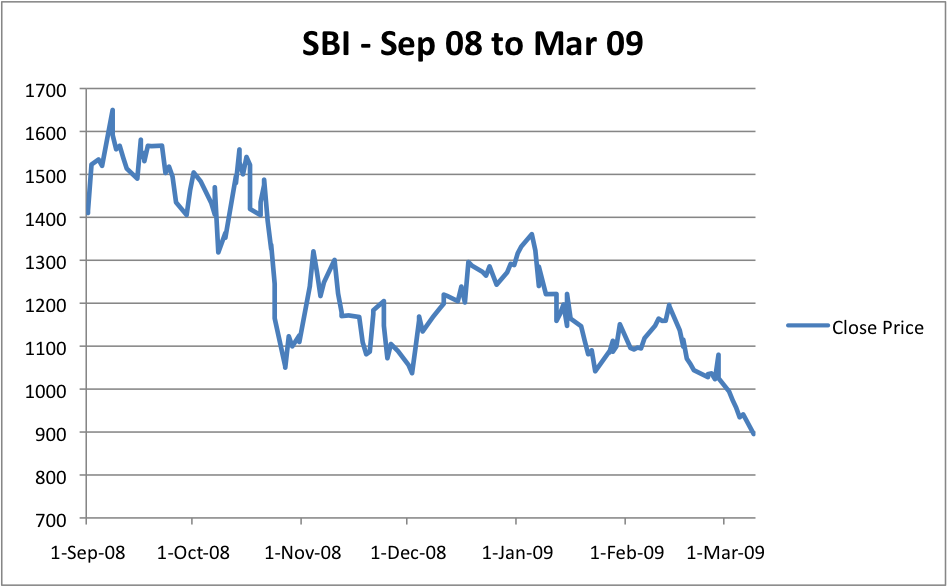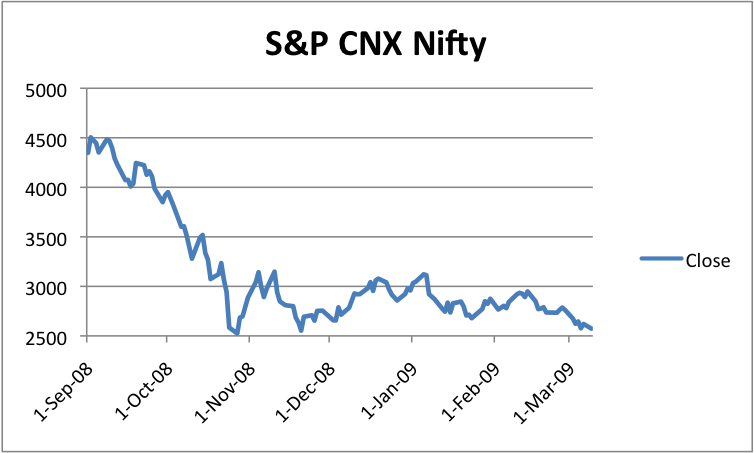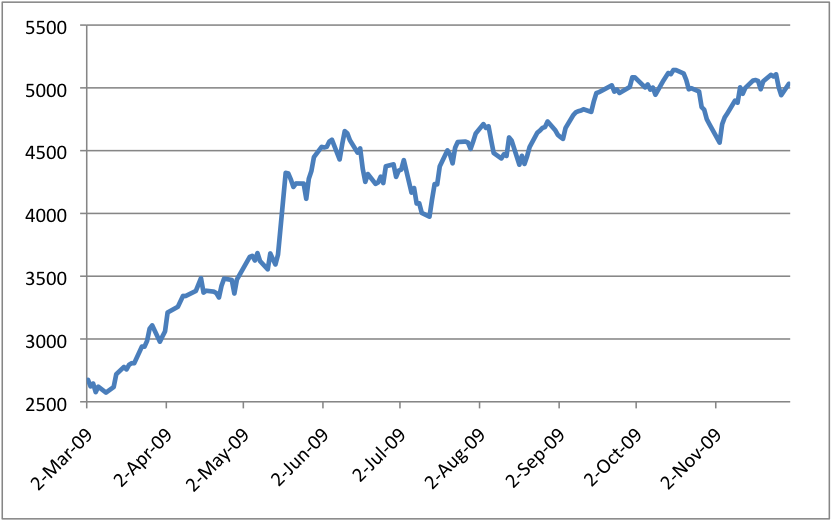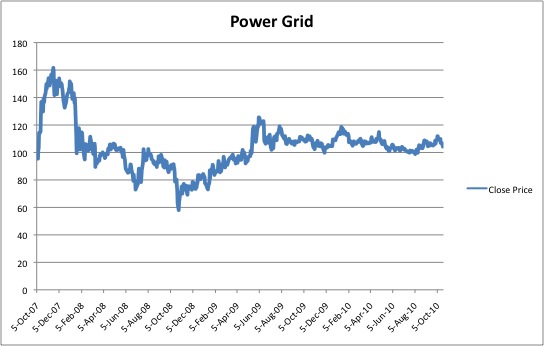Last week I took the L&T bond issue as an example to show how bond yields are calculated, and I thought I’d do a biggest post now to detail out some of the things said there so here goes.
There are a couple of tax saving bond recently issued by IDFC and L&T, so this is a good time to look at how the yield for these bonds are calculated, and some tools that will help you do so.
As you must have noticed the bond yields change with different plans, and I’m going to look at the IDFC issue with calculations to show how the yield on tax saving bonds are calculated.
Let me paste the details from the IDFC bonds here for quick reference because we will be using that as an example.
| Investment Amount |
Tax Slab |
Series 1 Yield |
Series 2 Yield |
Series 3 Yield |
Series 4 Yield |
| 5,000 |
30.9% |
13.89 |
12.06 |
17.19 |
15.74 |
| 5,000 |
20.6% |
11.57 |
10.52 |
13.41 |
12.57 |
| 5,000 |
10.30% |
9.64 |
9.18 |
10.23 |
9.86 |
| Rate of Interest |
———– |
8.00% p.a. |
N.A. |
7.50% p.a. |
N.A. |
| Buyback Amount |
———– |
5,000 |
10,800 |
5,000 |
7,180 |
| Time in years |
———– |
10 |
10 |
5 |
5 |
Let’s look at a couple of concepts before we deep dive in the process of calculation itself. These concepts are:
Effective Purchase price of a tax saving bond depends on your tax bracket
All bonds have a face value at which you will buy the bond and that is your cash outflow, however that’s not your effective purchase price in the case of tax saving infrastructure bonds. This is because these bonds reduce your taxable income, thereby reducing your tax outflow, and your effective purchase price is the face value of the bond minus the tax it saved you.
Effective Purchase Price = Face value of the bond – Tax saved by its purchase
Let’s look at this taking the IDFC bond as an example:
| Face Value |
5,000 |
5,000 |
5,000 |
| Tax Bracket |
10.30% |
20.60% |
30.90% |
| Tax Saved on Face Value |
515 |
1,030 |
1,545 |
| Effective Purchase Price |
4,485 |
3,970 |
3,455 |
As you can see your effective purchase price goes down as your tax bracket increases, and this is one of the major reasons their yield table shows a higher yield with a higher tax bracket.
No matter which series you take – your yield will go up as your tax bracket increases because you save more on taxes.
So that explains one part of it, and now let’s look at why yield varies within the same tax bracket.
A lower time period will give you a higher yield
If you remember the IDFC bond issue had series with and without an option of a buy-back. The series with an option of buy-back would have meant that you need to hold these only for 5 years, whereas the other series meant you held on to the bonds for ten years.
The reason the bond yield varies in these two cases is that the absolute tax benefit you get remains the same in both the cases, but in one case it is spread out over only 5 years, whereas in the other case it is spread out over 10 years. The tax you save will be the same whether you invest in the buyback option or not, and since the interest rate is much lesser than the tax savings – a longer time period lowers the yield.
So in this case if you compare Series 1 and 3 or Series 2 and 4 – everything is the same except the buyback period and that’s causing the difference in yield.
How to calculate bond yield when no interests are paid?
These series differ by two factors – buyback option, and payment of interest.
We looked at the buyback option and how it affects bond yield earlier, and now let’s look at payment of interest. One series pays out interest annually, whereas the other series doesn’t pay out any interest annually, but rather pays a lump-sum at the end of the time period.
Let’s first look at the yield for the series that pays a lump-sum.
You already know what your effective purchase price is, and you also know what you will get at the end of the time period, so all you need to do is to plug in these numbers in the Compounded Annual Growth Rate (CAGR) Calculator and see what the yield is.
Conceptually you are saying that if I start out with Rs. 3,455 (30.9% tax rate) then what is the rate of interest at which I should invest this sum, and also the interest earned every year, so that I reach at the amount at the end – Rs. 7,180 (series 4 example).
Here is how that table looks like.
| Investment Amount |
Tax Slab |
Effective Purchase Price |
Series 2 Yield
(CAGR) |
Series 4 Yield
(CAGR) |
| 5,000 |
30.9% |
3,455 |
12.06 |
15.74 |
| 5,000 |
20.6% |
3,970 |
10.52 |
12.57 |
| 5,000 |
10.30% |
4,485 |
9.18 |
9.86 |
| Buyback Amount |
———– |
——- |
10,800 |
7,180 |
| Time in years |
———– |
——- |
10 |
5 |
The post about CAGR also details how it is calculated, so you can read more there.
In future to calculate any bond yield where there are no annual interest payments look for these elements:
- Face Value
- Tax Bracket
- Effective purchase price
- Time in years
- Buyback amount
Then use effective purchase rate, time and buyback amount in the CAGR calculator to find out the yield.
How to calculate bond yield when interest is paid yearly?
When the interest is paid out yearly – you need to use a formula called Yield To Maturity (YTM) and calculate the bond’s yield. There is a nice little calculator present on this site that you can use to see how this works out. Use Series 1 and 3 and you will get a table such as the one below.
| Investment Amount |
Tax Slab |
Effective Purchase Price |
Series 1 Yield
(YTM) |
Series 3 Yield
(YTM) |
| 5,000 |
30.9% |
3,455 |
13.89 |
17.19 |
| 5,000 |
20.6% |
3,970 |
11.57 |
13.41 |
| 5,000 |
10.30% |
4,485 |
9.64 |
10.23 |
| Buyback Amount |
———– |
——- |
5,000 |
5,000 |
| Time in years |
———– |
——- |
10 |
5 |
| Coupon Rate |
|
|
8.00% |
7.50% |
If you input 3,455 in Current Market Price, 5,000 in Par Value, 8.00% in coupon rate, and 10 years – you will get your yield.
This formula assumes that whatever interest payments you received were re-invested at the coupon rate, and then takes the market value of the bond to calculate your yield.
In our example, this formula will say that you invested Rs. 3,455 initially, then get Rs. 400 at the end of every year which you will continue to re-invest at 8% and reap the benefit of compounding. Now this is an assumption so if you don’t actually end up investing your interest payment every year your yield will be reduced.
Factors not looked at while calculating yield on tax saving bonds
One obvious factor is the yield doesn’t take into account the taxes that you will end up paying on interest received. Other factor is that this formula doesn’t take into account any transaction costs that you incur.
I have another post lined up next week which looks at the limitations of the way these yields are being calculated in which I will cover some things that are not part of the way the yields are calculated by the issuer.
Conclusion
When you see a yield on a table – you might say higher is better, but then you need to keep in mind that in some cases to get the highest yield you will have to re-invest the interest payment yourself also.
Then there is the issue of time period also, would you much rather have your money back in 5 years or you are fine with keeping the money invested for 10 years since it is a relatively small amount.
Then of course, if you pay tax on that interest your yield goes down automatically by the amount of your tax paid.
I covered a fairly big area here, so if you feel that I got something incorrect, or something could be explained better please feel free to leave a comment, and I’ll try to answer it, or correct it as the case may be.

